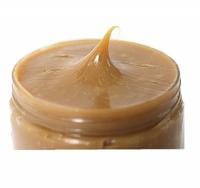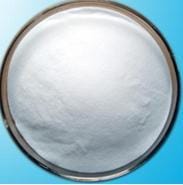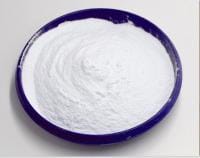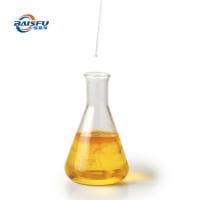Name: Rosemary Extract Ursolic Acid
Source: Rosemary
Botanical Name: Rosmarinus officinalis
Extract part: Dried Leaf
Active Ingredient: Ursolic Acid
Specification: 25%~98%
Appearance: Fine Brownish Green powder
Source
Rosmarinus officinalis L. from Lamiaceae family, is commonly known as rosemary. Rosemary is a widely cultivated herbal plant that is originated in the Mediterranean area. Rosemary is an aromatic evergreen shrub with leaves similar to hemlock needles .The leaves are used as a flavoring in foods and a prescription for treating minor ailments including :gout, cough, headache, high blood pressure, and reducing age-related memory loss.
Rosemary is used topically for preventing and treating baldness by applying to the skin ; and treating circulation problems, toothache, a skin condition called eczema, and joint or muscle pain such as myalgia, sciatica, and intercostal neuralgia. It is also used for wound healing, in bath therapy (balneotherapy), and as an insect repellent.
Main Bio-actives
Rosemary contains a number of phytochemicals, including rosmarinic acid, camphor, caffeic acid, ursolic acid, betulinic acid, and the antioxidants carnosic acid and carnosol.
Rosmarinic acid is a chemical compound firstly found in Rosmarinus officinalis which has antioxidant properties.
Another main antioxidant in rosemary is the phenolic diterpene carnosic acid ,appears to be the main substance for general oxidation leading to artifacts withγ-or δ-lactone structure in extracts of Rosmarinus officinalis .
Ursolic Acid is a key component of Rosemary, that is often used in skin care creams.Medicinal plants containing ursolic acid have been used in folk medicine before it was known which constituents were responsible for their therapeutic effectiveness.Ursolic acid with the structural type of pentacyclic triterpenes allows those plants processes several bioactivities,such as anti-tumor,anti-inflammation and lowering hyperlipemia.
Pharmacological effects
Anti-cancer
TRAIL (tumor necrosis factor (TNF)-related apoptosisinducing ligand), a member of the TNF family, has recently been considered a highly promising candidate as an anti-cancer drug, because it induces apoptosis specifically in malignant or transformed cells without any cytotoxicity toward a variety of normal cells . A considerable number of cancer cells, however, are resistant to apoptosis induced by TRAIL . TRAIL induces apoptosis by interacting with two different death-inducing receptors, therefore, targeting death receptors and their signaling molecules to trigger apoptosis in tumor cells is an attractive concept for cancer therapy.
In 2011 scientists reported on THE JOURNAL OF BIOLOGICAL CHEMISTRY that a component of rosemary ,Usolic Acid(UA) ,may sensitizes TRAIL-resistant cells enhance TRAIL-induced apoptosis through ROS and JNK-mediated up-regulation of DR4 and DR5 and down-regulation of antiapoptotic proteins , thus rendering cancer cells more sensitive to the cytotoxic activities of TRAIL. Considering that UA by itself is highly safe and exhibits anticancer activities against a wide variety of tumors in vitro and in vivo , its potential use in combination with TRAIL should be explored. Further studies in animals are needed to investigate the anticancer potential of UA in combination with TRAIL.
Antioxidant
Constituents in Rosemary extracts from Rosmarinus officinalis L contains several compounds proven to have antioxidative function.
According to Onocology reports crude ethanolic rosemary extract (RO) has anti-proliferative effects on human leukemia and breast carcinoma cells. The report shows RO has substantial antioxidant activity with RO at 1/10 and 1/5 dilutions having 8.1 and 12.6 microM Trolox equivalents, respectively. Moreover ,RO significantly reduced NO production by lipopolysaccharide (LPS)-activated cells in a dose-dependent manner . At 1/500 dilution, RO significantly reduced IL-1beta (p<0.01) and COX-2 (p<0.05) mRNA expression and non-significantly reduced TNFalpha and iNOS mRNA expression in the LPS-activated cells.In conclusion constituents in rosemary have shown a variety of pharmacological activities for cancer chemoprevention and therapy in in vitro and in vivo models.
Anti-inflammation
Biosci Biotechnol Biochem. reported in 2007 supercritical fluid SF-CO2 treatment of Rosemarinus officinalis L. fresh leaves under optimum conditions (80 degrees C at 5,000 psi) yielded 5.3% of extract supercritical fluid extraction (SFE)-80, in which five major active principles were identified by liquid chromatography/mass spectrometry (LC/MS), viz., rosmarinic acid, carnosol, 12-methoxycarnosic acid, carnosic acid, and methyl carnosate.
When treated in RAW 264.7, apparent dose-dependent NO inhibition. SFE-80 exhibited dose-dependent viability suppression and significant tumor necrosis factor alpha (TNF-alpha) production in Hep 3B, whereas no effect was found in Chang liver cells. Furthermore, no effect was observed in RAW 264.7 at dosages of 3.13 to 25 microg/ml, indicating that SFE-80 exhibited a noncytotoxic character. Conclusively, rosemary can be considered an herbal anti-inflammatory and anti-tumor agent.
Hypolipidemic effect
The hypolipidemic activity of leaves of rosemary (Rosmarinus officinalis) was studied through in lab BALB/c mice treatment experiment . The testing report was published on Journal of Biology and Life Science in 2012 shows there was a significant decrease (P < 0.001) in plasma total cholesterol (TC)(- 68.57%), low density lipoprotein (LDL) (- 56.34%), and triglycerides (TG) (- 182.61%). A significant increase in high density lipoprotein (HDL) (38.53%) was obtained in rosemary-fed mice compared to HC mice. In another experiment, the immunomodulatory activity of aqueous extract of R. officinalis was evaluated in BALB/c mice for 8 weeks. Humoral immunity against membrane proteins of sheep erythrocytes measured by ELISA showed that IgM (Immunoglobulin M) response significantly increased in mice fed with rosemary as compared to the control group . IgG (Immunoglobulin G) response increased significantly at all antibody titers, in mice fed with rosemary .
Researches proved Rosmarinus officinalis has potent immunomodulatory and hypolipidemic activity .
Applications
Rosemary was traditionally used to help alleviate muscle pain, improve memory, boost the immune and circulatory system,preventing and treating baldness buy applying to the skin .Rosemary is also used for digestion problems, including heartburn, intestinal gas (flatulence), liver and gallbladder complaints, and loss of appetite.
In foods, rosemary is used as a spice. The leaf and oil are used in foods, and the oil is used in beverages.
In manufacturing, rosemary oil is used as a fragrant component in soaps and perfumes.
In the food industry ,rosemary applied as a natural antioxidants .It is also used as an insect repellent.
http://www.comext.cn
























Reviews
There are no reviews yet.